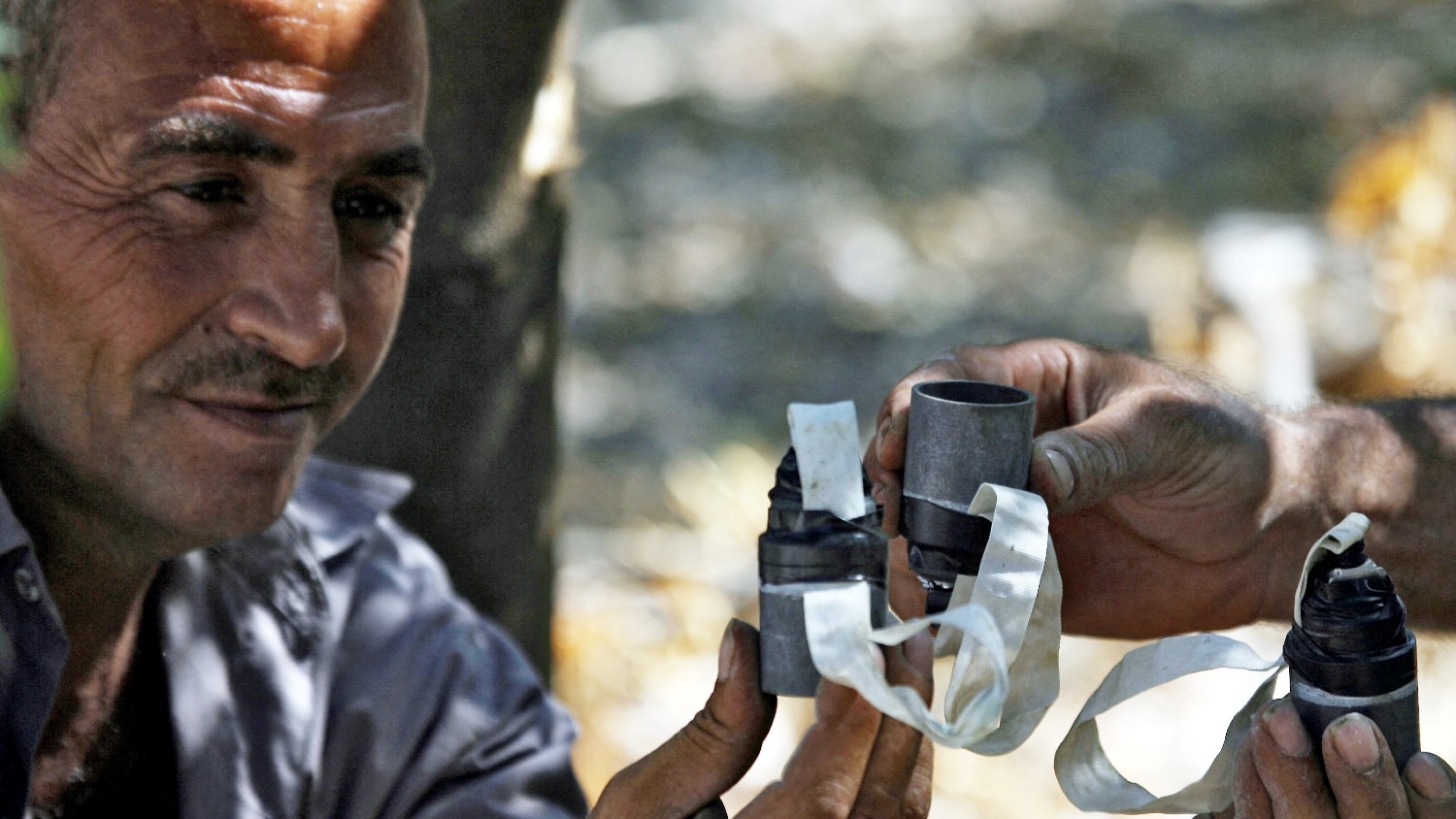Cluster munitions: What danger do these weapons pose to civilians?

The Biden administration on Friday announced it would be providing cluster munitions to Ukraine as Kiev continues to fight off an invasion by Russia, several US outlets have reported citing American officials.
The measure to send the bombs has been under serious consideration for at least a week, according to the reports. Sending cluster munitions would fulfil a long-held ask from Ukraine, which says they can be used to aid their campaign to push through a counteroffensive against Russia.
But the reports have been met with concerns, as the munitions have been used in previous conflicts around the world, leading to civilian casualties.
They have also been banned by more than 100 countries, including France and the United Kingdom.
"The Biden administration's decision to transfer cluster munitions will contribute to the terrible casualties being suffered by Ukrainian civilians both immediately and for years to come," Paul Hannon, vice chair of the International Campaign to Ban Landmines and Cluster Munition Coalition, said in a statement on Friday.
New MEE newsletter: Jerusalem Dispatch
Sign up to get the latest insights and analysis on Israel-Palestine, alongside Turkey Unpacked and other MEE newsletters
"Russia and Ukraine's use of cluster munitions is adding to Ukraine's already massive contamination from explosive remnants and landmines."
Middle East Eye takes a look at these controversial weapons, where they have been used and why so many countries have decided to ban their use.
What are cluster munitions?
Cluster bombs are weapons that open in the air, releasing smaller ammunition or "bomblets", that go on to be dispersed over a large area and are intended to destroy or neutralise multiple targets at once.
They can be launched from the ground or dropped onto targets from the air. Some of the bomblets could end up not detonating, effectively turning them into land mines that can explode long after the conflict has ended.
The technology was first developed during World War II and there are many variations of these bombs that have been used over the past century, including ones that use chemical weapons, incendiary bombs and anti-tank munitions.
The weapon is able to disperse tens or hundreds of submunitions, and can end up scattering bombs across an area the size of several football fields, according to the Cluster Munition Coalition, an advocacy group that warns against the use of the technology.
The munitions are able to kill or maim multiple targets at once, but are not able to make any distinction between a military or civilian target.
Why are they banned in so many countries?
Because of the danger that these munitions pose to civilians, human rights organisations and antiwar groups have long campaigned against their use.
The civilian cost of using these weapons was highlighted during the US invasions of Iraq and Afghanistan over two decades ago.
In 232 strikes between October 2001 and early 2002, the US dropped 1,228 cluster bombs containing 248,056 bomblets at locations throughout Afghanistan. In Iraq, the US and UK used nearly 13,000 cluster munitions containing an estimated 1.8 to two million submunitions in the three weeks of major combat, according to the Cluster Munitions Coalition.
The Landmine and Cluster Munitions Monitor tracked the use of cluster bombs between 2009 and 2018, and reported 4,128 new cluster munition casualties. In 2018, 99 percent of the casualties were civilians, according to the monitor.
In 2008, the Convention on Cluster Munitions was signed by 107 countries. The international treaty banned the production, transfer, stockpile and use of these weapons.
However, among the countries that have not signed on to the convention are the United States, Russia, Ukraine, Brazil and India. The majority of the countries in the Middle East are not party to the convention with the exception of Iraq, Lebanon and Tunisia.
Where have they been used?
The last large-scale American use of cluster bombs was during the 2003 invasion of Iraq, according to the Pentagon. Washington also used the technology in a strike in Yemen in 2009, which resulted in civilian casualties.
Rights groups have documented the use of cluster munitions by Syrian government forces against opposition strongholds during the country's civil war, frequently hitting civilian targets and infrastructure.
Israel also used these bombs in civilian areas in south Lebanon, including during the 1982 invasion that saw Israeli troops reach the capital Beirut, as well as in 2006.
The UN and Human Rights Watch have accused Israel of firing as many as four million cluster munitions into Lebanon, leaving unexploded bombs that continue to pose a threat to Lebanese civilians.
The Saudi Arabian-led coalition in Yemen has been criticised for using cluster bombs in its war there. In 2017, the UN labelled Yemen the second deadliest country for cluster munitions after Syria. Children have been killed or maimed long after the munitions originally fell, making it difficult to know the true toll.
Middle East Eye delivers independent and unrivalled coverage and analysis of the Middle East, North Africa and beyond. To learn more about republishing this content and the associated fees, please fill out this form. More about MEE can be found here.







